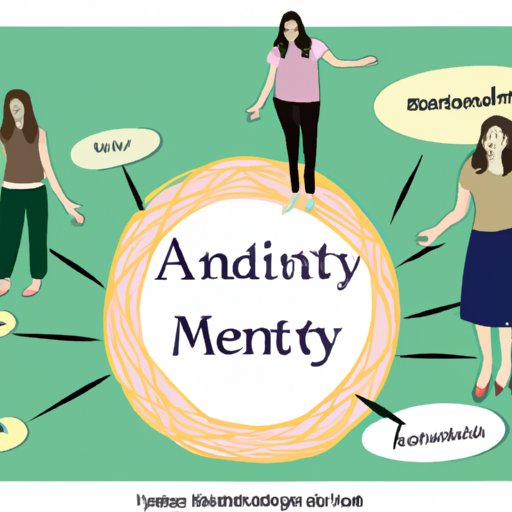Introduction
Anxiety attacks can be debilitating for those who experience them. The racing heart, shaky hands, and fear of losing control can make it difficult to carry on with even the simplest of tasks. Fortunately, there are techniques and tips for managing anxiety attacks that can help calm both your mind and body. The purpose of this article is to provide helpful tips and techniques for managing anxiety attacks.
Grounding techniques
Grounding techniques are a form of mindfulness- based therapy that involve shifting your attention away from anxious thoughts and focusing on the present moment. By doing so, you can help calm your mind and reduce physical symptoms of anxiety such as rapid heart rate and shallow breathing
One of the most effective grounding techniques is deep breathing. To use this technique, sit in a comfortable position, close your eyes and take a slow, deep breath in through your nose and exhale through your mouth.
Visualization is another useful technique that can help you calm down during an anxiety attack. Simply visualize a soothing, peaceful scene in your mind – for example, a beach or a favorite vacation spot- and focus on your senses, trying to invoke the feeling of being there.
Progressive muscle relaxation involves tensing and relaxing different muscles throughout your body. This technique can help alleviate physical symptoms of anxiety.
Positive self-talk
Positive self-talk involves focusing on the present moment and countering negative thoughts with positive ones.
An example of positive affirmation is saying “I am enough,” “I am safe,” or “I trust myself to handle whatever comes my way”. Many people find repeating positive affirmations to themselves helps them manage anxiety symptoms during an attack.
Mindfulness exercises
Mindfulness is a state of being fully present and engaged in the moment. Practicing mindfulness exercises can help manage anxiety by bringing your focus and attention away from anxious thoughts and onto the present.
Meditation, body scans, and mindful breathing are all effective mindfulness exercises. To meditate, find a quiet, comfortable place to sit and close your eyes. Breathe deeply and focus your attention on your breath as it moves in and out of your body. If your mind wanders, gently return your focus to your breath.
Body scans involve focusing on each part of your body, starting at the top of your head and moving down towards your toes, taking note of any sensations you feel, without judgment.
Exercise
Incorporating regular exercise into your daily routine can help manage anxiety. Even low-to-moderate-intensity exercise like walking, yoga or low-impact aerobics can help calm your mind and reduce physical symptoms of anxiety.
Starting an exercise routine can sometimes be overwhelming. Consider beginning with 10-minute walks or smaller sessions of yoga and gradually building up over time.
Get help
While the tips and techniques outlined above can be helpful for managing anxiety attacks, it’s important to seek professional help if you experience severe anxiety attacks. There is no one-size-fits-all solution for managing anxiety, and mental health professionals can help you find the right treatment for your individual needs.
Support groups and online resources can also help provide a community to turn to during difficult times.
Conclusion
Anxiety can be managed, and the worst anxiety attacks can be overcome. By incorporating grounding techniques, positive self-talk, mindfulness, exercise, and seeking professional support when needed, those suffering from anxiety can learn to better manage their symptoms. Remember to be patient and compassionate with yourself. The path to healing and recovery may not be quick or easy, but it is possible.
